The ethnicity awarding gap is getting bigger and bigger
Jim is an Associate Editor (SUs) at Wonkhe
Tags
Like back in 2019, when Universities UK’s #CLOSINGTHEGAP report told us that the gap between the likelihood of White students and students from Black, Asian or minority ethnic (BAME) backgrounds getting a first- or upper-second-class degree was 13 per cent among 2017/18 graduates.
More recently there’s been a time when the sector has been responding to regulatory pressure to “crack down” on grade inflation.
The long-delayed release of the HESA student collection tells us where we’re at – or at least where we were in 2022/23.
We’re looking here at full-time UK-domiciled first degree qualifiers, with a permanent address in the UK, by classification of first degree and personal characteristics.
On the latter, Firsts were at 30.0 per cent – down from the record high of 37.6 per cent in 2020/21. Trebles all round.
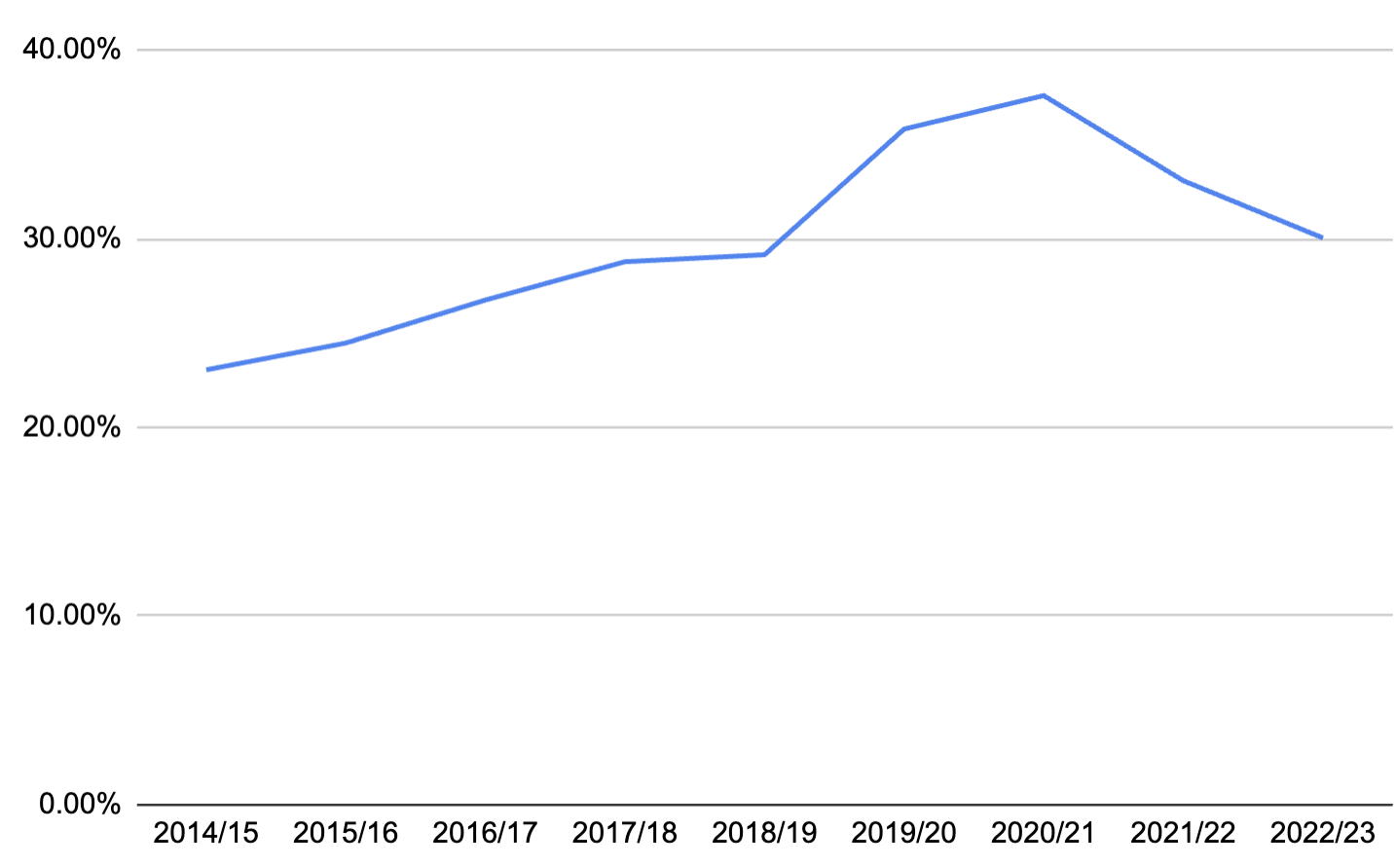
But on the former, the BAME awarding gap now stands at 11.9pp – up from 10.2pp in 2021/22, which was itself up from 8.7pp the year before that:
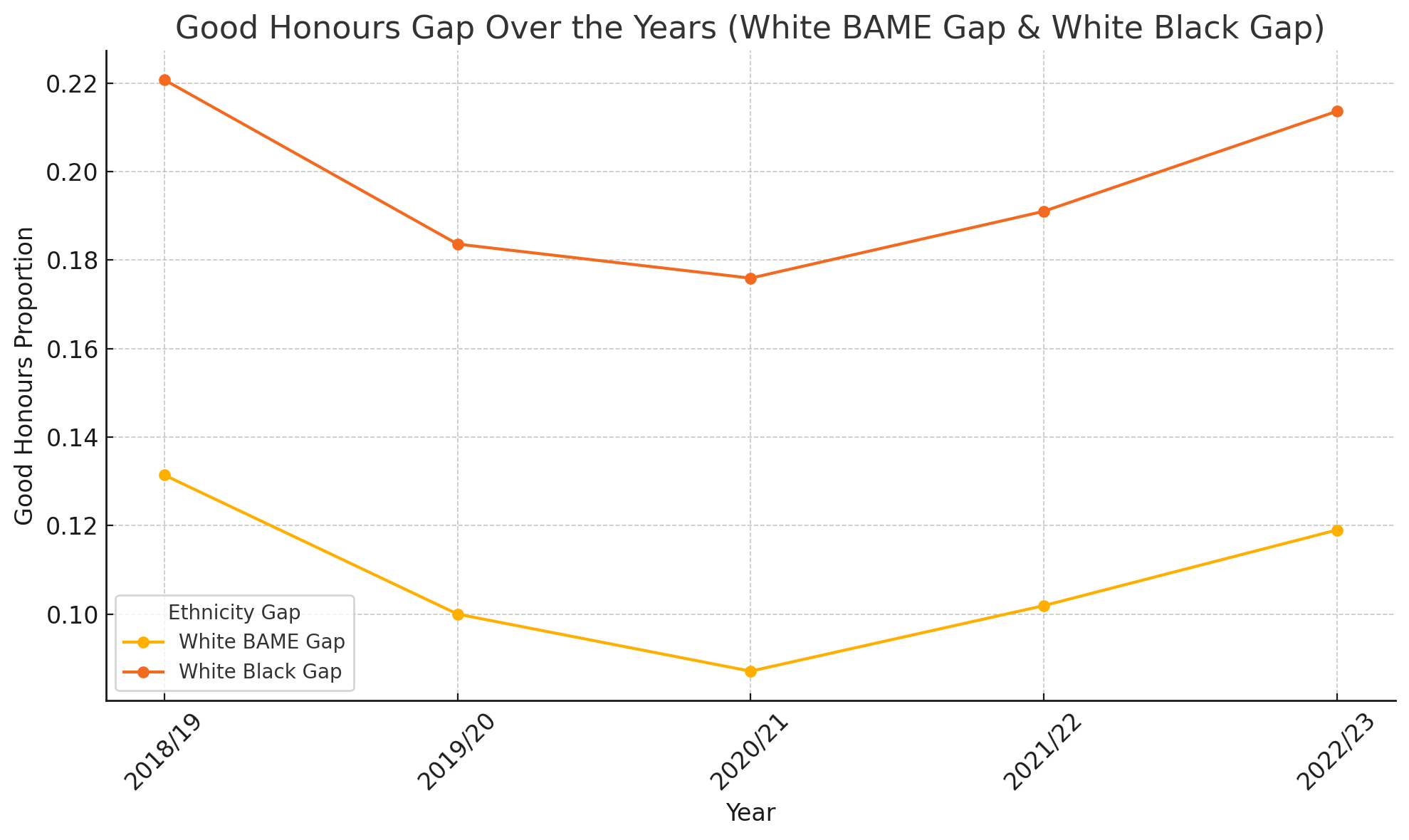
It’s even worse for Black students. The 2022/23 gap stands at 21.4pp – up from 19.1pp in 2021/22, which was itself up from 17.6pp in 2020/21.
One of the questions that raises is whether white or non-white students were driving the change. White awarding fell 2.0pp YOY, while BAME awarding fell 3.7pp, and within that Black awarding fell 4.3pp YOY.
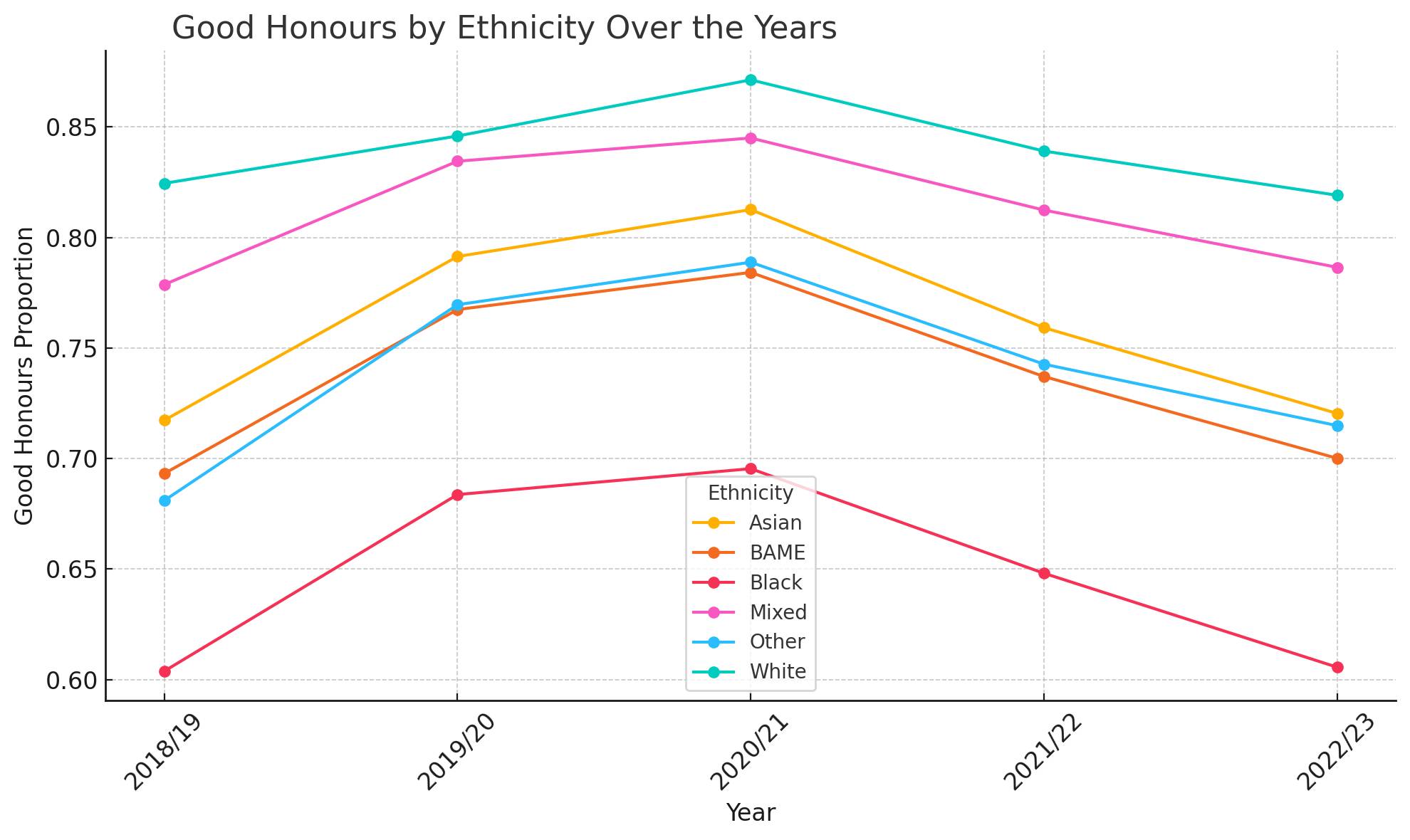
Leaping to hypotheses is dangerous. In 2021 all sorts of sector folk were popping corks over the narrowing of the gap – but closer examination revealed that it was pretty much a statistical trick.
If in a given year everyone does better – as they did in the “no detriment” Covid-era – then it would look like the gap was closing because more BAME students would hit the threshold for a 2:1.
You’d only spot if there was still a problem if you looked at firsts only. And in 2020/21 while the BAME firsts awarding gap was 9.6pp, the Black firsts awarding gap was 20.9pp – the highest on record.
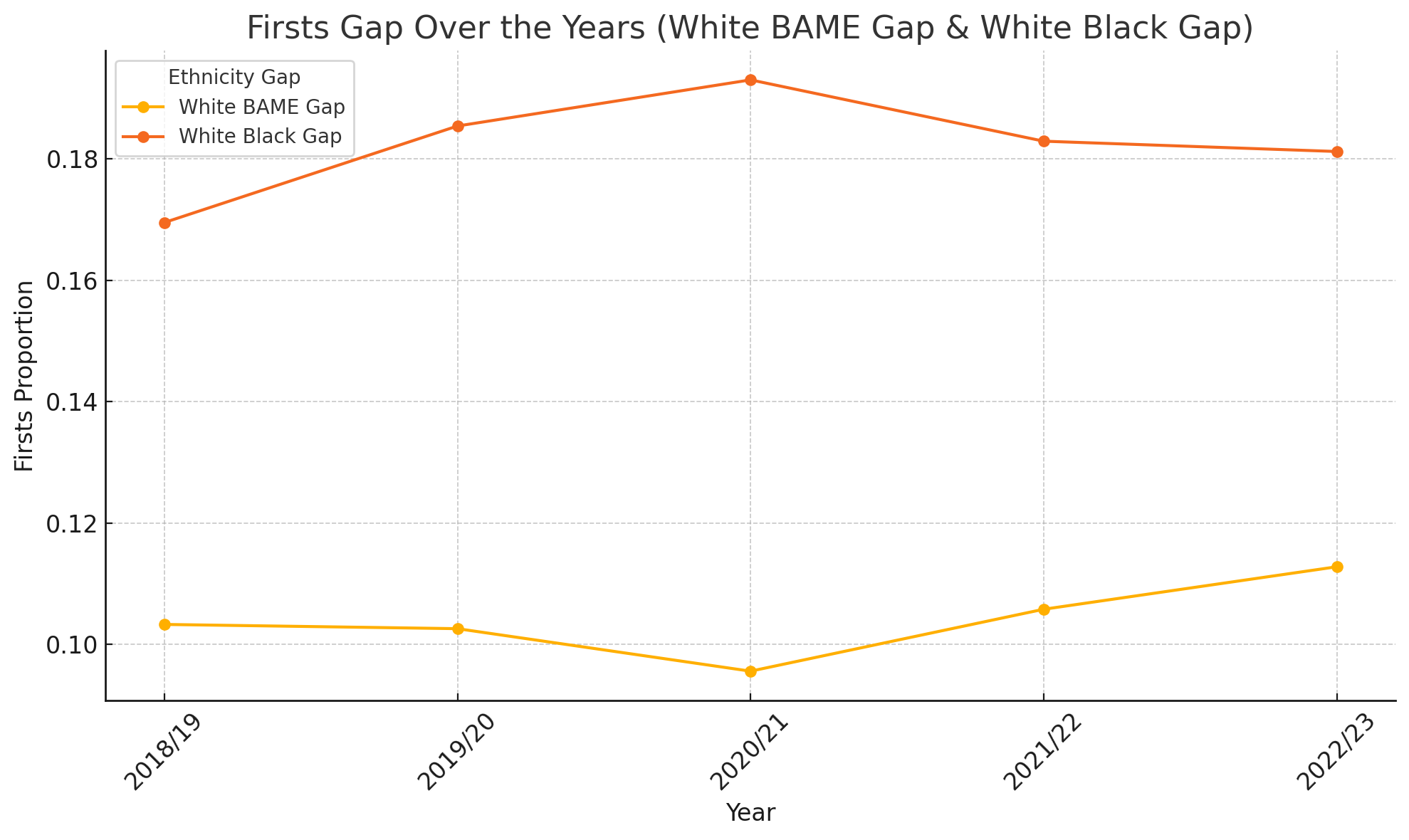
Then as overall awarding falls as “No Detriment” falls off, the firsts gap for Black students levelled off, and the BAME gap grew again. Here’s firsts awaring:
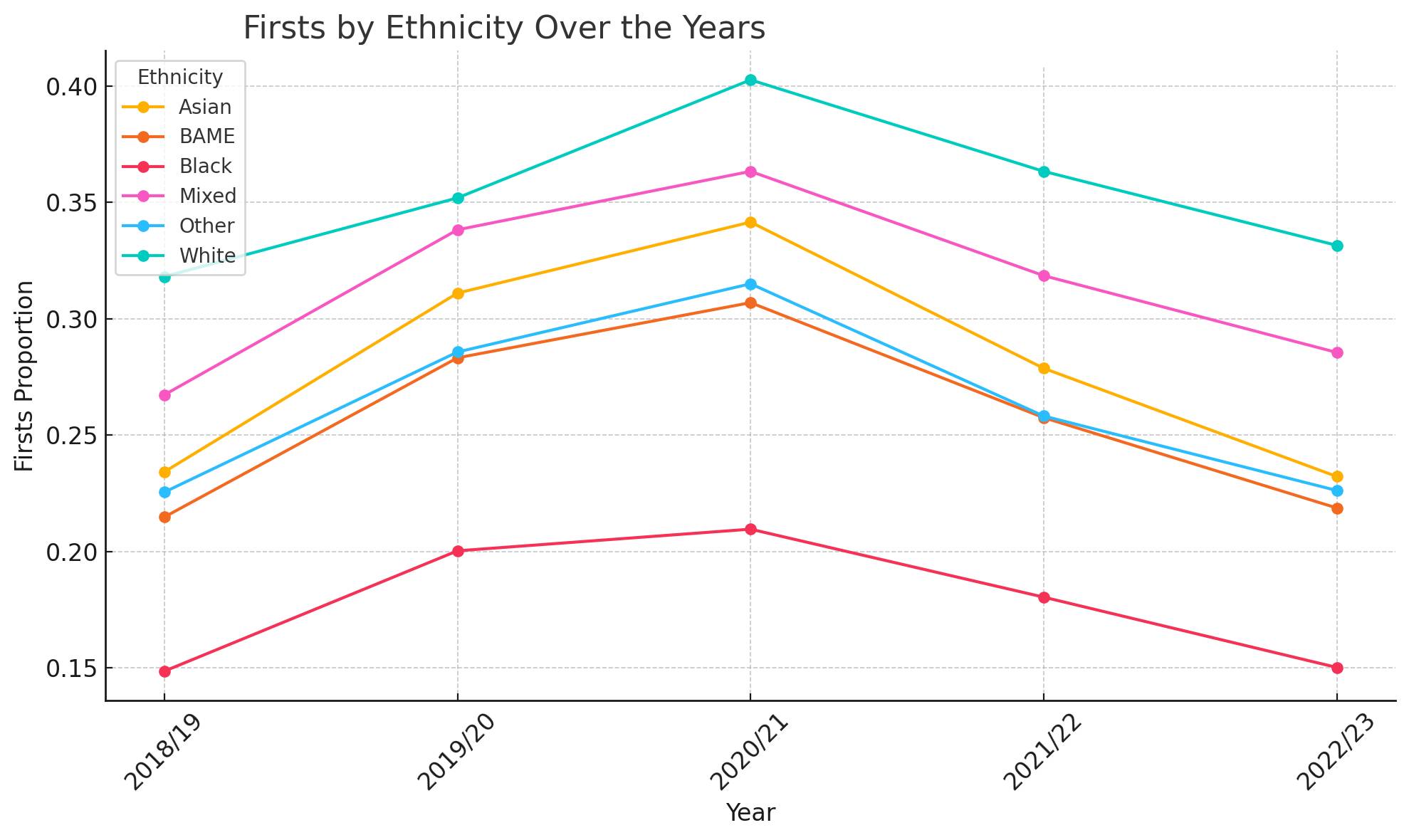
In other words, we’re pretty much where we were in 2018/19. And not only was it not the case that the gap meaningfully narrowed during that Covid era, it’s now pretty clear that both BAME and Black awarding is going in absolutely the wrong direction – falling faster than White awarding.
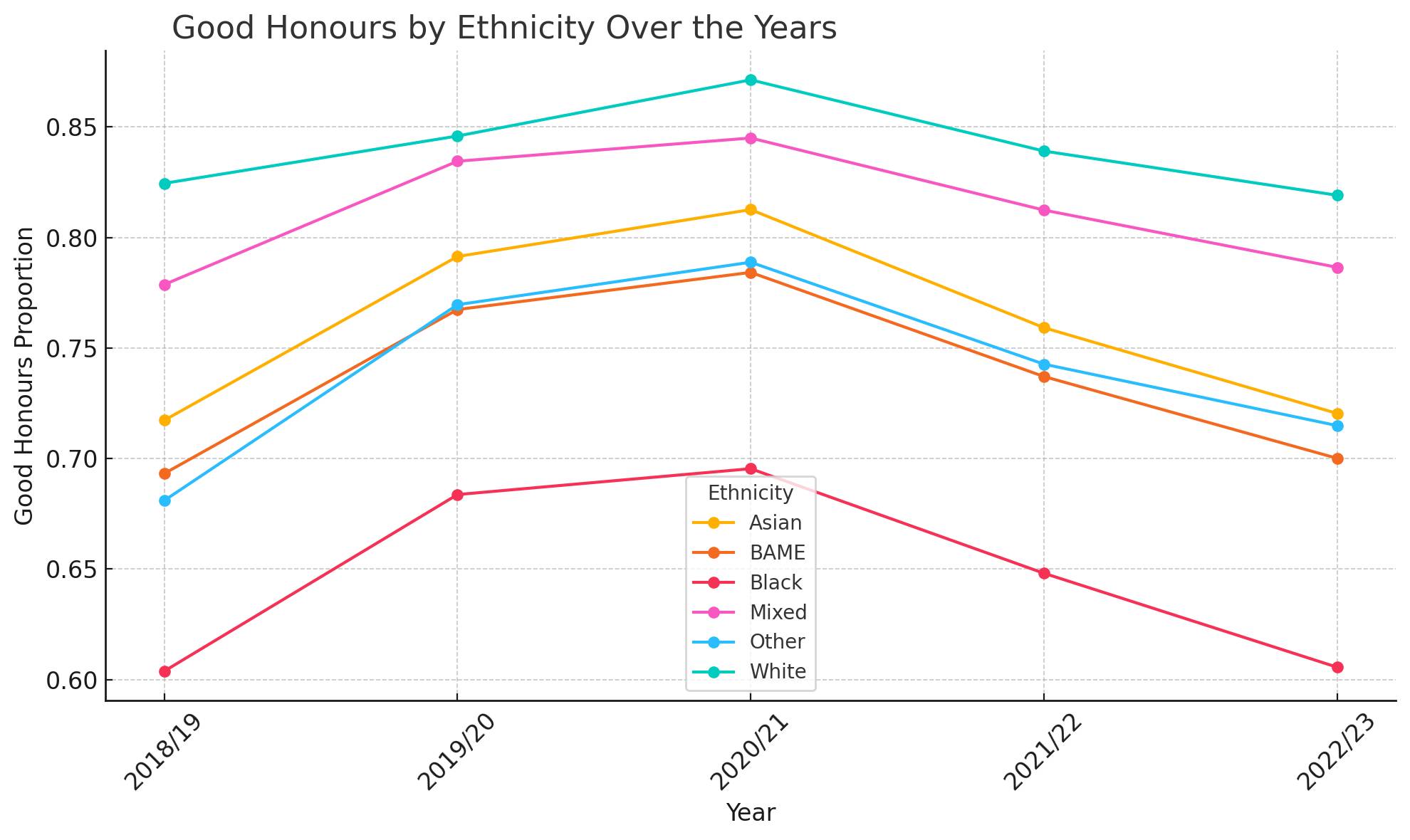
Wales’ numbers – which admittedly don’t have a huge impact on the overall totals – represent smaller gaps for both BAME and Black.
England has in theory the most stringent regulation in this area – but is it working? Wales has a BAME (good honours, FT FD) awarding gap of 8.1pp and a Black gap of 12.2pp, while England has gaps of 13.3pp for BAME and a whopping 25.8pp for Black. So much for Access and Participation plans.


Such statistics are meaningless without corresponding statistics for the “access gap”: whites are far less likely to go to university than BAMEs. A reasonable assumption is that those “missing” white students would not have been amongst the best performers. The “awarding gap” could very well largely disappear when this is taken into account.